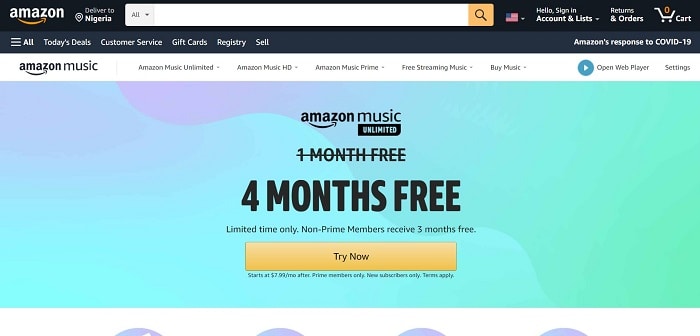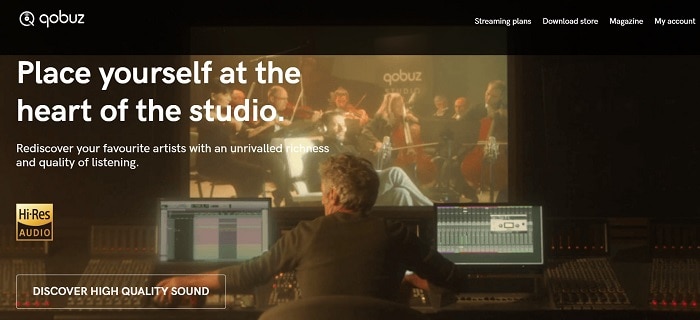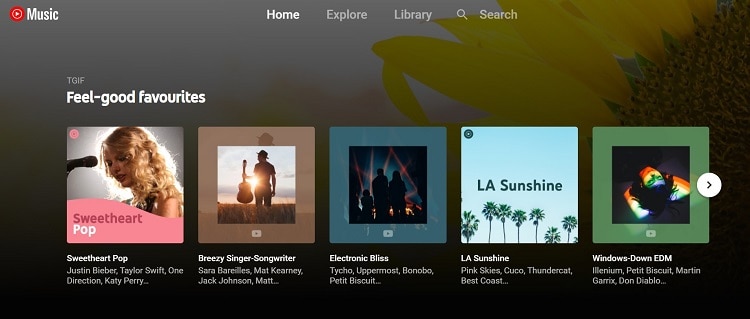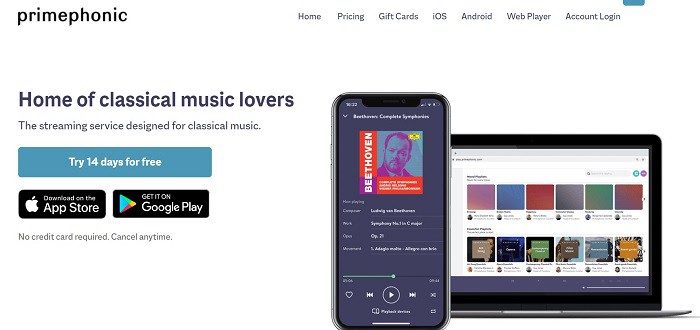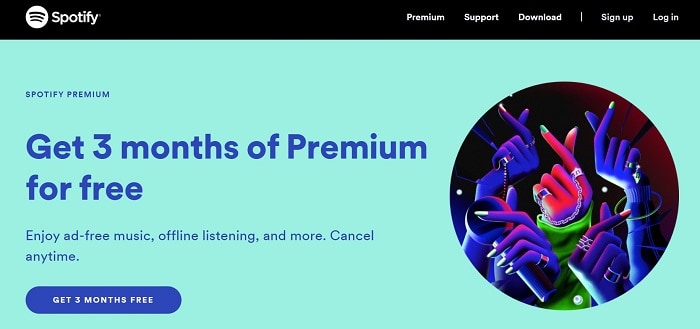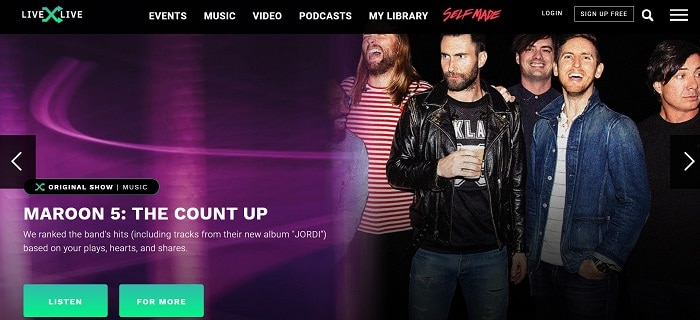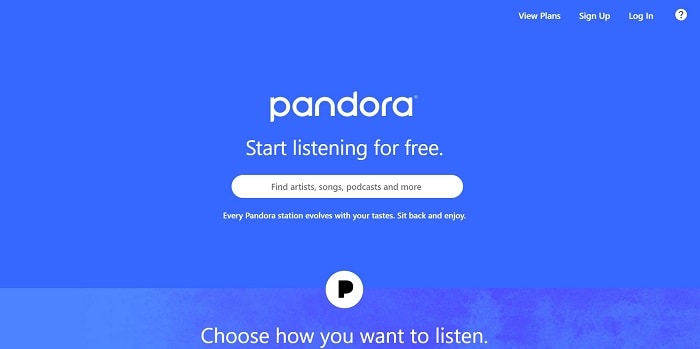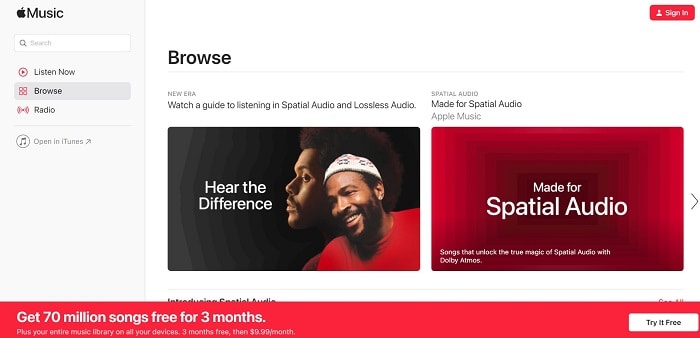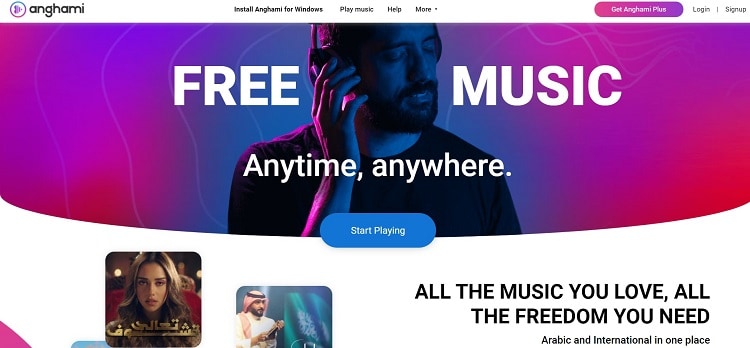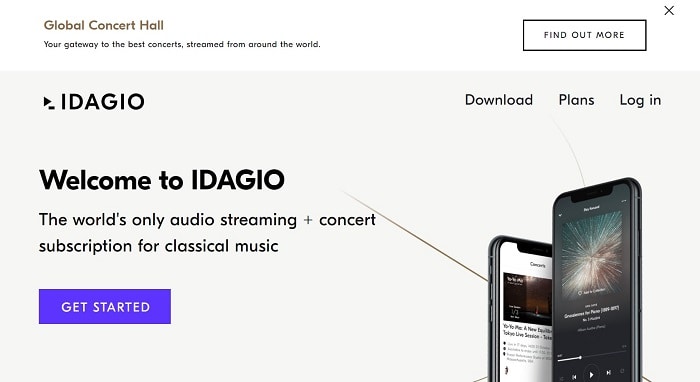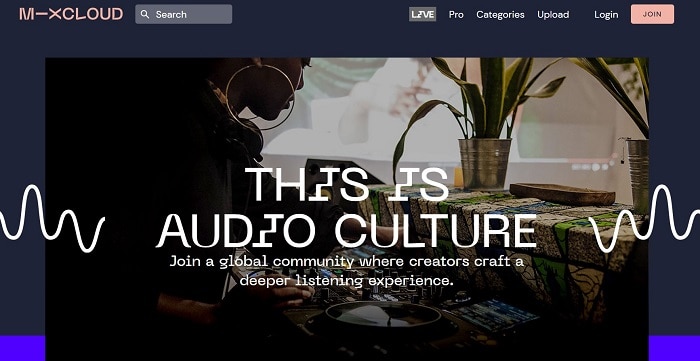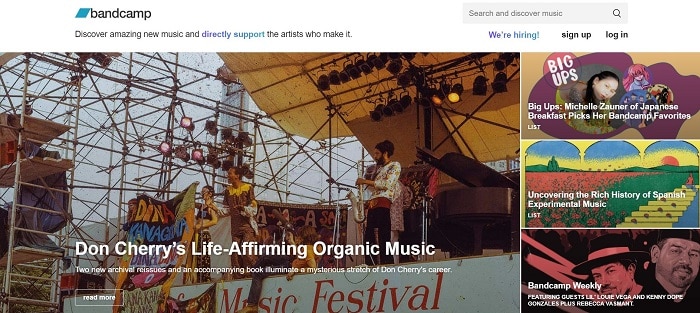Tidal is one of the most popular music services in the world, primarily because it’s affiliated with a host of A-list celebrities.
Jay-Z used to be the majority stakeholder in the company, and he currently sits on Tidal’s board of directors. Rihanna, Beyonce, and Madonna are also co-owners of the music enterprise.
The global streaming service is the first of its kind offering high fidelity sound and high definition video quality. Tidal is beloved by music lovers who are interested in getting the possible sound when listening to their favorite songs.
However, Tidal’s subscription plans are quite pricey and it has a limited music catalog. Also, the platform falls short in other areas despite its excellent audio quality and video offerings.
It’s not easy to navigate or search for what you want on Tidal. The app is prone to crashes, stereo playback is unstable, and streams lag, get choppy, or distorted.
As a result, it’s necessary to explore better and less expensive Tidal alternatives to help you discover and enjoy the perfect soundtracks for any time, place, or activity.
Best Tidal Alternatives
1. Deezer
Deezer has been around for almost a decade and a half. It has gone from being a small music service in France to a global sensation thanks to its simple interface, comprehensive device/platform support, and extensive catalog.
Like Tidal, Deezer offers lossless CD-quality streaming, but it doesn’t support hi-res audio streams or Master Quality Authenticated tracks which you can find on Tidal at the moment.
However, Deezer has partnered with MQA, so hi-res streaming should be available on the service soon.
Deezer currently boasts of a vast library with over 70 million tracks, same as Tidal. It also has Deezer Flow, an amazing algorithmic recommendation feature that creates an infinite mix of songs for you based on your listening habits and feedback.
You can easily upload your own MP3 tracks to the service without worrying about playback distortion or app crashes.
The service offers a free account for mobile users, but you’ll have to put up with annoying ads cutting into your music.
To get rid of the ads and enjoy higher audio quality, you’ll need to pay for Deezer’s Premium or HiFi plan which costs $10 or $15 monthly.
Compared to Tidal’s $19.99 monthly HiFi plan, Deezer is a cheaper alternative. Deezer will also give you a 90-day free trial, which is longer than Tidal’s 30-day trial period for new users. These are a plus when you compare Deezer with other alternatives.
2. Amazon Music Unlimited
Amazon Music Unlimited is the paid version of Amazon Prime Music. It comes with an expanded music library, free radio stations, 360 Reality Audio, and high-res streaming.
With an audio quality of 256 and 850 kbps, Amazon music is better than most other streaming services but it still falls short of Tidal’s offering.
Also, if you have a personal music collection, you won’t be able to import it into Amazon Music, so you’ll have to start building your playlists again from scratch.
Say goodbye to searching Google for the lyrics of your favorite songs, Amazon Music automatically displays the lyrics of the song being played.
Although the service proclaims that it has tens of millions of tracks, the exact size of its catalog is unclear so there’s no way of knowing if it’s larger than Tidal’s.
At $8 for Amazon Prime members and $10 for non-members, the AmazonMusic Unlimited subscription plan is cheaper than Tidal. Even the lossless audio and hi-res audio streaming option, Amazon Music HD, costs only $13 for Prime members and $15 for non-members.
3. Qobuz
If you’re an audiophile and looking for a Tidal alternative that gives you high fidelity sound production with none of the stress, consider opting for Qobuz.
The French streaming service offers excellent audio quality combined with a clear and interactive interface.
Unlike Tidal, you can stream your tracks in hi-resolution on Qobuz without using an MQA decoder.
The platform’s library currently stands at $70 million tracks, which is the same as what Tidal offers. Still, it should do just fine for streaming all kinds of mainstream music, but you may find artists that are not so well-known.
Qobuz gives you the option of streaming, downloading, or buying albums as well as access to liner notes. On the price front, Qobuz offers three subscription tiers priced at $12.49, $14.99, and $20.83 per month.
Although the prices seem to be on par with Tidal, Qobuz takes home the advantage because it doesn’t require you to purchase a specialized decoder to enjoy hi-res music.
4. YouTube Music
YouTube’s foray into the music streaming business started out rough, but it’s finally gotten to a place where it can compete with the big names.
YouTube Music has a simple, well-designed interface with a superb search function and a seemingly endless music vault.
Although the sound quality of YouTube music can’t compare to Tidal, it makes up for the difference with low prices.
YouTube Music’s premium subscription goes for only $9.99 per month with a three-month free trial period for new users. You can even enjoy the service without paying a dime, but you’ll have to put up with ads and you can’t listen offline.
YouTube also offers personalized suggestions based on the music you’ve listened to in the past. You can easily watch live covers or music videos for songs while listening to them.
Another reason to choose YouTube music is the ability to import up to 100,000 personal audio files to the service and stream them. To top it off, this feature is free to use.
5. SoundCloud
Long before Tidal existed, SoundCloud was helping people discover new artists and listen to the songs that they love without having to resort to piracy.
The Tidal alternative has been around since 2007 and is best known for being the go-to music destination for more obscure artists.
SoundCloud is responsible for launching the careers of artists like Chance the Rapper and Post Malone, and pushing them into the award-winning spotlight they bask in today.
The platform offers a free version that lets you stream and download as many tracks as you want, while its premium service, SoundCloud Go and Go+ only cost $4.99 and $9.99/month.
There’s always a fresh stream of new, trending music to be found in SoundCloud’s Explore tab. Unlike Tidal and most other SoundCloud alternatives, the service offers both music and non-music content-like podcasts.
6. Primephonic
If you love classical music, Primephonic is one of the best Tidal alternatives out there. Although the service hasn’t been around for long, it’s been making great strides in providing a good user experience and a comprehensive selection of original soundtracks and classics.
So far, Primephonic has more than 3.5 million classical tracks, some of which you won’t find anywhere else.
Whether you have a litany of classical records that you love or you’re new to the genre, Primephonic makes it easy for you to find and explore the works of composers and performers from various periods.
With 320kps audio streams, Primephonic’s audio quality is not as powerful as Tidal’s. However, it does offer a cheaper subscription plan at £10 per month for the standard tier and £15 for the platinum tier, which comes with lossless 24-bit FLAC streams—a much higher audio quality.
7. Spotify
When it comes to user experience, smart playlists, social connections, and recommendation algorithms, not many music streaming services do better than Spotify. The platform has established itself as a giant in its arena.
Spotify allows users to stream music, podcasts, and stations for free with ads and a limited selection for on-demand songs. For ad-free streaming and unlimited on-demand access, Spotify’s subscription prices start at $5/month for students, $10 for individuals, and $15 for the family plan.
With the private session feature, you can play your guilty pleasure songs so your friends can’t see what you’re listening to.
Spotify also offers some exclusive content, group listening sessions, song lyrics, and music video previews. It also allows you to easily switch from one connected device to another without skipping a beat
The only thing that Tidal has over Spotify is video content and hi-res audio streaming, and Spotify is working on bringing high-fidelity audio to the platform later this year.
8. LiveXLive
Formerly known as Slacker Radio, LiveXLive is another great alternative to Tidal that’s worth looking at, especially if you prefer a more relaxed listening style and don’t really mind what songs play next.
While Tidal does not offer access to stations and or live performances, LiveXLive lets you stream them.
This means that you can enjoy live concerts from wherever you are as long as you have a subscription to LiveXLive and the service is partnered with the organization hosting the performance.
You can stream stations on the service for free with ads or cop a LiveXLive subscription plan at $3.99 or $9.99 per month with access to its elaborate on-demand music library.
One downside of LiveXLive is that the app doesn’t have a very intuitive interface so you might experience some difficulty navigating it.
9. Pandora
Pandora is home to music, podcasts, comedy, and radio stations. Like its counterpart, LiveXLive, it’s ideal for people who are content to just let their music play without fussing over the next song on the queue.
You don’t need to go through the trouble of curating a playlist or picking songs, you can just kick back and let Pandora make the selections for you.
All you have to do is mention the artist you want to listen to and the service will create a playlist of their tracks and other artists with similar music styles.
The audio quality that Pandora offers cannot compete with Tidal, but it effectively challenges its rival on the price front. At $4.99/month with ads and $9.99/month without ads, Pandora’s subscription prices are more accessible than Tidal’s.
Check out this post to explore more Pandora-like services.
10. Apple Music
If you want a vast library of music, podcasts, and live radio, Apple Music is worth a try. It’s one of the most popular music streaming platforms and it integrates perfectly with Apple devices. Android users can also access the service through the app
Like Tidal, Apple Music offers curated playlists. But unlike Tidal, it has a tab that displays all the songs you favorite, categorized by artists.
This means that you can listen to your favorite songs from your favorite artists without having to put their entire discography on shuffle.
It also has a music locker feature that allows you to store your personal music catalog. Apple Music recently added spatial and lossless audio streaming options to the service so you can delight in immersive listening sessions and premium CD-quality streams on selected tracks.
Although Apple Music doesn’t have a free plan, it gives new users the first three months for free. To keep benefiting from the Apple Music subscription after the trial period, you can opt for the $9.99/month individual plan or the $14.99/month six-member family plan.
11. SiriusXM
SiriusXM is designed for listeners who have a hankering for terrestrial radio stations with a commercial-free experience and a large variety of options.
What’s more, if you’re a fan of Howard Stern, this is the only platform where you can access his channels on demand.
Currently, the service offers a select package for $4.99/month that allows you to access 50 channels, including music with skippable tracks, talk radio, comedy, on-demand shows, sports, and more.
It also has a premier package that costs $13/month and comes with hundreds of additional channels.
New users can enjoy free trials and discounts for up to one year. SiriusXM’s packages and plans change often, but you can always find updated information on its pricing page.
Compared to Tidal, SiriusXM’s interface for app and web can be confusing for new users and requires a bit of a learning curve.
12. Anghami
Anghami is often overlooked when discussing streaming services, but it’s a decent alternative to Tidal for those who don’t demand a lot from their listening experiences.
Although its interface leaves something to be desired, it has a comprehensive music library and integrates fully with a host of platforms. You can also get curated playlists based on your listening history.
Anghami cannot boast of Tidal’s hi-res audio quality, but it offers a free tier with ads and cheap ad-free subscription plans to compensate for that. Its individual plan costs $6.33 per month while the family plan costs $7.49 per month.
13. Idagio
Unlike Tidal which provides access to a broad spectrum of music, Idagio only caters to a specific genre—classical music. If you’d rather listen to a Rashmininov recording than rap, rock, pop, or indie music, take Idagio out for a spin.
It has a library of over two million classical tracks and an interface that makes search and navigation a breeze.
You can easily find your favorite concertos and symphonies, browse through curated playlists, and sort classical tracks using various parameters like instruments and composers.
Idagio’s pricing is competitive at $10 per month with 50% off for students. The service also has a free tier with ads that give you access to its catalog without paying.
To top it off, Idagio offers access to exclusive online concerts, featuring leading and upcoming performers for $30/month.
Regardless of the subscription plan that you opt for, Idagio delivers lossless, hi-fi audio streaming that doesn’t require specialized decoders to enjoy as is the case with Tidal.
14. Mixcloud
Discover new sounds and stream millions of tracks, podcasts, radio shows, and DJ mixes on Mixcloud.
You can directly support the artists and creators you like by subscribing to their channels and making little donations to help them keep creating the music and shows you love.
Mixcloud offers incredible audio quality, so you’ll get to experience your favorite tracks the way the creators intended for them to be heard. You can connect with your favorite producers, labels, songwriters, and artists from around the globe.
With this service, there’s a chance to develop meaningful relationships with the people responsible for the sounds and shows that you love, an opportunity that is absent from Tidal and most other streaming services.
Mixcloud’s interface across app and web is sleek and clean, and you’re free to stream as much as you want without paying anything.
15. Bandcamp
Unlike the other Tidal alternatives on this list, Bandcamp takes a different approach to the music streaming business. Instead of using algorithms to recommend stuff they think you might like and paying artists whatever they want, they let you take charge.
You find the record you love and donate whatever you like directly to the artists or their label.
There are no annual or monthly subscriptions on Bandcamp. You just support an artist by buying their song or album and then you get a free fan account with unlimited downloads and streaming. In return, Bandcamp gets a 10-15% cut on the amount you paid or donated.
The search features on Bandcamp are very powerful so you can locate whatever you’re looking for or discover unique records and interesting music with the help of tags and filters.
Conclusion
There you have it! The best music streaming options like Tidal on the market today. All of the alternatives on this list have their own selling points, but Spotify trumps them all.
It has the best user experience and interface, the most personalized and targeted recommendations/discovery features, and some of the cheapest prices in the game.
It also has something for everyone, no matter your music tastes. It houses both popular and underground artists, alongside a vast collection of podcasts and exclusive shows.
And it offers the best-curated playlists that’ll have you feeling like the service is living inside your brain.
Tom loves to write on technology, e-commerce & internet marketing.
Tom has been a full-time internet marketer for two decades now, earning millions of dollars while living life on his own terms. Along the way, he’s also coached thousands of other people to success.

